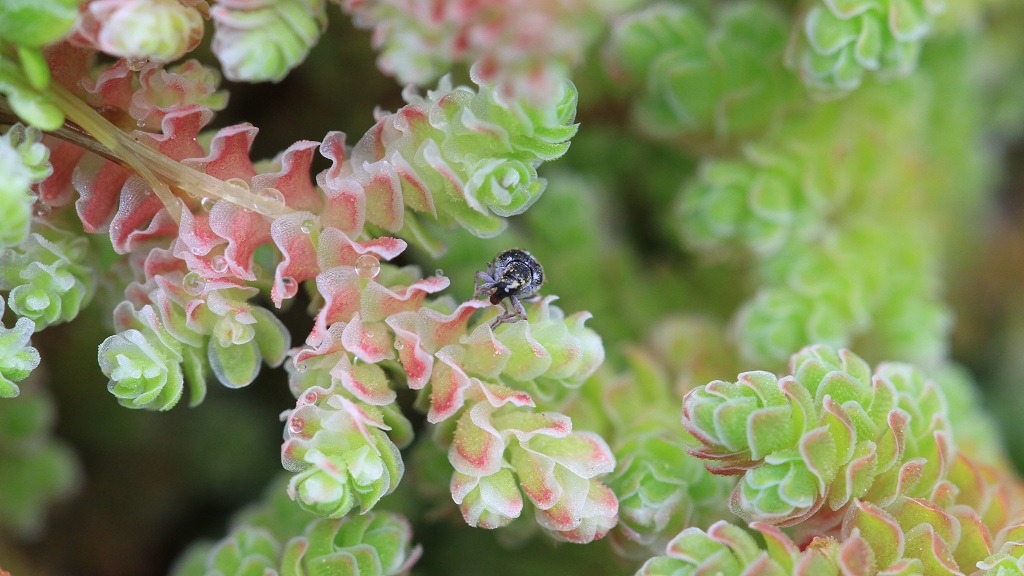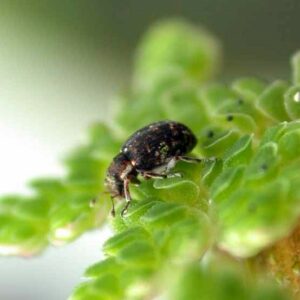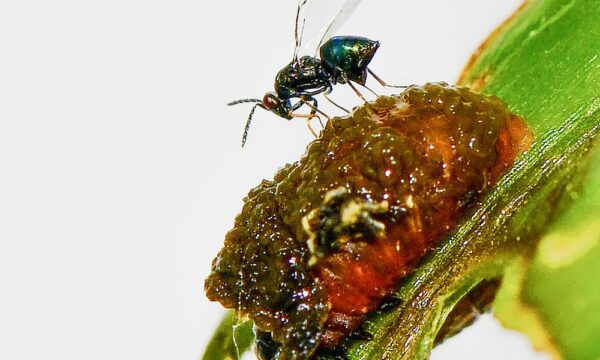
To increase the uptake of weed biocontrol in Europe, we need more awareness about its benefits and successes
New research suggests that greater awareness about the benefits and successes of weed biocontrol is needed in Europe to increase its uptake. Scientists have discovered a knowledge gap between global regions, showing that EU professionals are less knowledgeable about weed biocontrol than those in other regions. In this blog, we look at weed biocontrol, the reasons why the knowledge gap might exist and what can be done to close it.
The European team, whose corresponding author was CABI’s Dr Dick Shaw, Senior Regional Director for Europe and The Americas, published their findings in the Journal of Environmental Management. They researched weed biocontrol knowledge in different global regions, surveying over 700 professionals working in natural environment management. About half were from Europe and half from the rest of the world, including Africa, North America and Oceania.
The paper highlighted how location was a significant factor in the professionals’ knowledge and perceptions of weed biocontrol. Europeans showed less appreciation for its cost-effectiveness, safety and sustainability. They also showed a bias towards examples of biocontrol failure and saw it as a riskier method.
Conversely, more professionals from other global regions had a better knowledge and perception of biocontrol. They were correctly aware of the absence or presence of biocontrol in their countries. And they could identify successful examples.
These insights are important. Weed biocontrol is a critical method for sustainably controlling harmful invasive plants. Perceptions of its benefits and successes can affect the extent to which it is implemented.
The value of weed biocontrol
Millions of people globally face problems with invasive weeds. Transported without their natural enemies, they spread and thrive. And they can lead to serious problems. Japanese knotweed (Fallopia japonica), for example, devalues buildings and homes, impacts on biodiversity and costs the UK economy alone millions of pounds each year.
Furthermore, they can crowd out native flora and fauna, harming biodiversity and eco-systems. Chemical control is not always a sustainable way of controlling weeds. And chemical control can harm human and environmental health. Biocontrol is a natural way of managing pest plants. Sometimes it’s the best or only option, especially in delicate habitats. It’s been used effectively against invasive species for over 100 years.
If biocontrol is to be effective and sustainable, we must ensure that more professionals working in natural environment management know about it.
Researching plant biocontrol knowledge
The study highlights some interesting findings. Around 85% of non-EU respondents know of successful examples of biocontrol. And in 88% of cases, they can name them correctly. However, only about half of the EU respondents could give an example of successful biocontrol. And one-third of these examples were incorrect. This could be hindering the use of biocontrol to address Europe’s worst weeds.
Dr Hélia Marchante is the study’s lead author. She works with the Centre for Functional Ecology. She commented on how non-EU respondents accurately understood the use of biocontrol in their own country. However, EU respondents had much lower knowledge. Almost one in five mistakenly considered that plant biocontrol was used in their country.
The researchers put forward potential reasons for this. Complex regulatory procedures, for example, could be hindering the use of biocontrol. Europeans also used biocontrol less compared to other regions. To date, 130 countries have released over 500 biological control agents to control at least 220 invasive plant species. But European countries only make up less than 1% of these releases.
Yet, there are successful examples to be found. The aquatic weed Azolla, for example, is highly invasive in the UK. But land-owners are successfully controlling it using a weevil, Stenopelmus rufinasus saving the GB economy more than £7m per year


How to introduce more weed biocontrol to Europe?
Could the solution be greater awareness raising? The researchers suggest that an awareness campaign could promote safe and successful examples of plant biocontrol. And this could increase general knowledge about the practice.
One of the biggest challenges is the perception of high risk. So awareness should focus on clarifying the rigorous safety testing procedures of biocontrol. This includes quarantine and risk assessments.
Any campaign should also include information about sustainability. Biocontrol is a highly sustainable method of weed control. And the higher cost-benefits of biocontrol compared to other control methods should also be highlighted. In this way, the regional differences in biocontrol knowledge and perception can start to be addressed.
Read the full open access paper:
Knowledge and perceptions of invasive plant biocontrol in Europe versus the rest of the world.
By Hélia Marchante (Centre for Functional Ecology, Portugal), Elizabete Marchante (Centre for Functional Ecology, Portugal), Laura Verbrugge (Aalto University, Finland) Suzanne Lommen (Leiden University, the Netherlands), Richard Shaw (CABI Europe, United Kingdom)
Find out more about CABI’s biocontrol work in Europe:
‘Wonder weevils’ released in Yorkshire waterways in fight against invasive floating pennywort
Ruffling parrot’s feathers: the biological control of Myriophyllum aquaticum
Potential of parasitoid to control invasive fruit fly highlighted in study
Biological control for Japanese knotweed comes into sharp focus during second release of psyllid
Related News & Blogs
Biological control in action: Zambia’s field days on fighting fall armyworm
Experts from CABI recently held two field days and an expo in Zambia, showcasing innovative approaches to pest management to 584 farmers, agro-dealers and other stakeholders to help raise awareness of approaches to tackle the invasive fall armyworm (Sp…
11 June 2025




